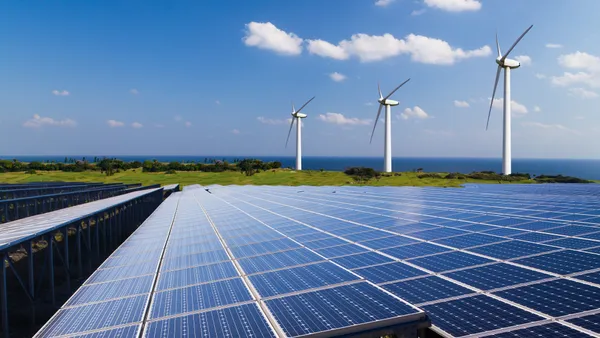Andrew Warrell, is a partner, Spencer Holmes is an associate partner, and Tyler Bowen is an expert at McKinsey & Company.
Renewable energy is transforming the U.S. power market, which is set to grow from 25% to 45% of total generation by 2030. This rapid expansion, while crucial for a low-carbon future, brings new dynamics for investors to navigate — particularly around price volatility.
Solar and wind power, driven by variable weather patterns, can create differences between forecasted and actual output, leading to major price gaps in day-ahead versus real-time markets. For renewable-heavy portfolios, managing this variability is key to ensure stable, resilient returns.
Additionally, demand mismatches exacerbate this volatility. Solar production peaks around midday, often when demand is low, and tapers off in the evening when demand rises. In states like California, where solar comprises a large share of power, this mismatch can lead to significant daily price swings. Adding to the challenge, many renewable assets are located far from demand centers, leading to locational price differences which can reduce profit margins.
Contrastingly, renewable generation can exceed demand at times of extreme wind or sunshine, leading to price drops that reduce revenues when output is at peak. For renewable-heavy portfolios, this “oversupply effect” underscores the need for stabilizing factors to secure a steady stream of revenue.
Flexible assets as a stabilizer
To counteract renewable energy source-driven volatility, flexible assets have become a remedy in managing supply-demand imbalances and stabilizing returns. Battery storage, gas generation and demand response are leading solutions, helping portfolios remain resilient in increasingly volatile markets.
Battery storage capacity in the U.S. is expected to increase from 13 GW today to 110 GW by 2030, marking an eightfold growth as investors respond to stronger demand for higher storage capabilities. Batteries allow excess energy to be stored when prices are low and released during peak demand — creating new revenue opportunities and reducing exposure in lower-price periods. With their ability to quickly respond to price fluctuations, batteries are becoming an essential asset for stabilizing returns.
Gas generation remains a reliable option for on-demand power supply. While gas comprises 43% of U.S. power generation, some investors weigh its carbon footprint against its role in stabilizing portfolios exposed to renewables. Gas plants can quickly adjust output, ensuring reliable power when renewable generation falls short, offering a hedge against price instability.
Demand response programs have experienced rising participation, providing grid operators with the ability to incentivize consumers to lower usage during peak periods. Demand response now represents around 60 GW of capacity nationwide, helping to ease strain on the grid without requiring new infrastructure. For investors, it offers a flexible and sustainable way to balance renewable variability, enabling a dynamic approach to managing portfolio risk.
Together, battery storage, gas generation and demand response provide a crucial buffer against the risks associated with renewable energy, making portfolios more adaptable and financially resilient.
A strategic approach to building resilient portfolios
In addition to integrating flexible assets, a multi-pronged strategy is essential for long-term stability in renewable-heavy portfolios. Acquiring flexible capacity through M&A can add resilience to existing investments. By investing in established battery storage facilities or demand response assets, investors gain immediate capacity and increased control over risk, without the lengthy timelines typically needed for new energy infrastructure projects.
Integrated financial modeling allows investors to take a portfolio-wide view of potential risks and returns. By simulating how flexible assets and financial hedges perform under different market conditions, investors can optimize for risk-adjusted returns, structuring portfolios that strike a balance between risk appetite and stability.
Future-proofing for a renewable future
As renewable energy reshapes the power landscape, volatility will remain a defining characteristic of renewable-heavy portfolios. Investors can position themselves for success by integrating flexible assets and adopting a resilience-focused strategy that anticipates market swings.
With flexible assets and a proactive approach to risk management, investors can capture the promise of renewables while maintaining the stability needed for consistent returns. In this evolving energy landscape, such strategies are essential for securing long-term growth and safeguarding portfolio resilience.




















